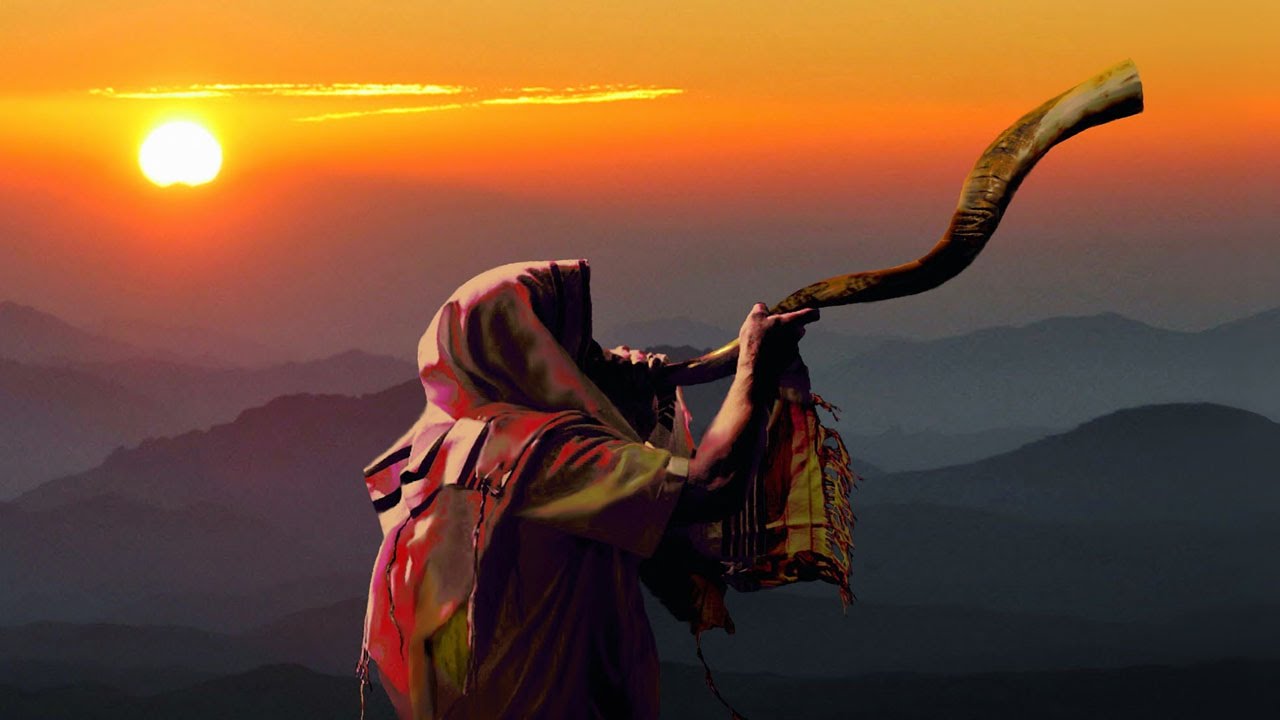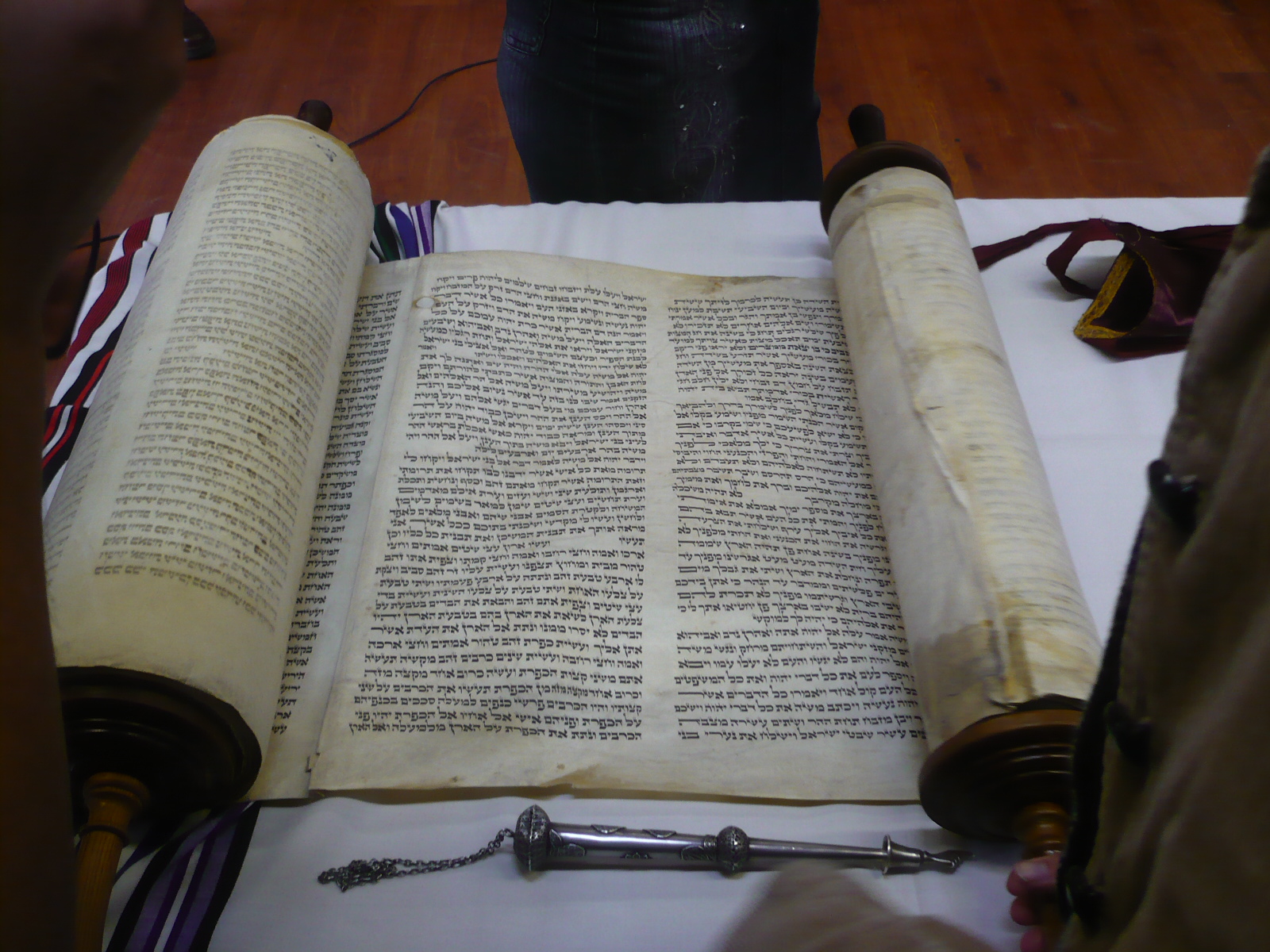What is Rosh Hashanah?
Rosh Hashanah is the Jewish New Year, and it is celebrated on the first two days of the Jewish month of Tishrei, which usually falls in September or October. It is considered one of the holiest days in the Jewish calendar. It marks the beginning of the High Holy Days, a ten-day period of repentance and reflection that culminates in Yom Kippur, the Day of Atonement.
During Rosh Hashanah, Jews traditionally gather with family and friends to attend synagogue services and participate in various rituals and customs. These rituals and customs are deeply rooted in Jewish tradition and symbolism and are intended to help individuals connect with their faith and each other.
For example, blowing the Shofar, or ram’s horn, is a central commandment of Rosh Hashanah. The sound of the Shofar is meant to awaken the soul and inspire individuals to reflect on their actions from the past year and to strive for a better future.
Another important tradition during Rosh Hashanah is eating symbolic foods, such as apples dipped in honey, pomegranates, and round challah bread. These foods represent hopes and wishes for a sweet, fruitful, and prosperous new year.
Other customs during Rosh Hashanah include Tashlikh, a ritual of casting off sins by throwing bread crumbs into a body of water and reciting the prayer of Unetanneh Tokef, which asks God to inscribe individuals in the Book of Life for the coming year.
When is Rosh Hashanah?
Rosh Hashanah, the Jewish New Year, falls on the first and second days of the Hebrew month of Tishrei, which usually corresponds to September or October in the Gregorian calendar. The exact dates of Rosh Hashanah vary from year to year, as the Hebrew calendar is based on a lunar cycle and is adjusted to align with the solar year. In 2023, Rosh Hashanah will begin at sundown on September 20th and end at sundown on September 22nd.
Avinu Malkeinu: The Prayer for Forgiveness
One of the central prayers of Rosh Hashanah is Avinu Malkeinu, which means “Our Father, Our King.” This prayer is recited on both days of Rosh Hashanah and on Yom Kippur. It is a plea for forgiveness, asking God to forgive our sins and grant us a good and sweet year. Avinu Malkeinu is a solemn and mighty prayer, and many people find it to be one of the most significant parts of the High Holy Days.
Binding of Isaac: The Akedah
The story of the Binding of Isaac, or the Akedah in Hebrew, is a pivotal narrative in Jewish tradition that has profound significance for Rosh Hashanah and its themes of reflection and renewal. The story is told in Genesis 22:1-18, recounting how God commanded Abraham to sacrifice his son Isaac to test his faith and obedience.
Abraham, a devoted follower of God, was prepared to carry out the sacrifice, but at the last moment, God intervened and provided a ram for Abraham to sacrifice in place of his son. The story is often interpreted as a test of Abraham’s faith, but it also carries broader themes of sacrifice, redemption, and the renewal of life.
During Rosh Hashanah, the story of the Binding of Isaac is read as part of the liturgy. It is a powerful reminder of Jewish tradition’s importance of faith, sacrifice, and renewal. The story challenges individuals to reflect on their faith and consider what sacrifices they are willing to make to renew their connection with God and others.
The story also highlights the importance of repentance, forgiveness, and atonement, central themes of the High Holy Days. Just as God provided a ram for Abraham to sacrifice, so too can individuals seek forgiveness and atonement for their sins through repentance and self-reflection.
Kittel and Machzor: The Garment and the Prayer Book

Kittel and Machzor are essential to Rosh Hashanah and the High Holy Days.
Kittel is a white robe or garment traditionally worn by some Jewish men on Rosh Hashanah and Yom Kippur. The Kittel is typically made of white linen and is worn over regular clothing during holiday services. The garment is often associated with purity, humility, and repentance, and it serves as a reminder of the solemnity and significance of the High Holy Days.
On the other hand, Machzor is a prayer book used during the High Holy Days. The Machzor contains a collection of prayers, hymns, and readings specific to Rosh Hashanah and Yom Kippur. It is designed to guide individuals through the liturgy of the holiday services. The Machzor is typically more comprehensive than a regular prayer book and may include additional prayers, commentaries, and interpretations.
Together, Kittel and Machzor represent the physical and spiritual aspects of the High Holy Days. The kittel serves as a physical reminder of the solemnity and significance of the holiday. At the same time, the Machzor guides individuals through the spiritual and emotional journey of the High Holy Days.
The use of Kittel and Machzor during Rosh Hashanah and Yom Kippur reflects the importance of tradition and ritual in Jewish culture. These elements help to create a sense of continuity and connection between past and present. They provide a framework for individuals to engage with their faith and each other during this important time of reflection and renewal.
Rosh Hashanah Kibbutz: The Collective Celebration
Rosh Hashanah Kibbutz is a collective celebration rooted in the early years of the Zionist movement in Israel. In the early 1900s, Jews who immigrated to Isreal from Europe began to form agricultural communities, or kibbutzim, where they could live and work together. These communities often included members from different backgrounds and countries, and they strongly emphasized collective living and shared responsibility.
As these communities developed, they celebrated Rosh Hashanah as a collective holiday, with community-wide meals, services, and activities. The idea behind the collective celebration was to create a sense of unity and shared purpose among community members and to highlight the importance of mutual support and cooperation.
Today, Rosh Hashanah Kibbutz continues to be a popular way to celebrate the holiday in Israel, and many kibbutzim still hold special services and meals for the occasion. These celebrations often include traditional holiday foods such as apples and honey and more modern elements such as music, dance, and communal activities.
The collective nature of Rosh Hashanah Kibbutz reflects the importance of community and collective responsibility in Jewish tradition. The holiday is a time for individual reflection and repentance and to come together as a community to support and encourage each other. By celebrating Rosh Hashanah as a collective, kibbutzim and other Jewish communities can create a sense of unity and shared purpose and reinforce the idea that we are all responsible for each other’s well-being.
Rosh Hashanah Tractate: The Laws and Customs of the Holiday
Rosh Hashanah Tractate is a section of the Talmud, a central text in Jewish tradition that contains a collection of rabbinic teachings and commentary on Jewish law and ethics. The Rosh Hashanah Tractate focuses explicitly on the laws and customs of the holiday of Rosh Hashanah.
The Tractate is divided into three main sections: the laws of the Shofar (the ram’s horn that is blown during the Rosh Hashanah services), the prayers and liturgy of Rosh Hashanah, and the laws of the day itself. Within each section, the Tractate explores the nuances and intricacies of the various customs and practices associated with the holiday.
One of the key themes that emerge from the Rosh Hashanah Tractate is the idea of judgment and repentance. The Tractate teaches that Rosh Hashanah is when God judges each individual and determines their fate for the coming year. It is also a time for individuals to reflect on their actions and seek forgiveness for any wrongdoing in their personal lives and relationships with others.
In addition to its religious significance, the Rosh Hashanah Tractate is an essential cultural and historical document. It provides insight into the customs and practices of ancient Jewish communities and how these communities adapted and evolved over time. The Tractate also reflects the diversity and richness of Jewish tradition, highlighting the many different interpretations and perspectives within the larger Jewish community.
Rosh Hashanah Seder: The Festive Meal
The symbolic foods typically included in a Rosh Hashanah Seder include apples and honey, pomegranates, dates, leeks or scallions, carrots, and a fish head. Each food represents a different hope or wishes for the coming year, such as sweetness, abundance, fertility, and prosperity.
The Rosh Hashanah Seder also includes a series of blessings and prayers recited over symbolic foods. These blessings and prayers express gratitude for the past year’s blessings and ask for God’s blessings and protection in the coming year.
In addition to the symbolic foods and blessings, the Rosh Hashanah Seder is an opportunity for family and friends to come together and celebrate the holiday. The festive meal is often accompanied by singing, storytelling, and other activities that bring joy and meaning to the occasion.
Shanah Tova (song)
“Shanah Tova” is a traditional Hebrew song sung during the Jewish holiday of Rosh Hashanah, which marks the start of the Jewish new year. The phrase “Shanah Tova” means “good year” in Hebrew, and the song is a way to express wishes for a happy and prosperous year to come.
The melody of “Shanah Tova” is simple and joyful, and the lyrics usually vary on the theme of wishing for a good year. Some versions of the song include additional lyrics that express gratitude for the past year’s blessings and hope for peace and harmony in the world.
“Shanah Tova” is often sung in synagogues and Jewish homes during the Rosh Hashanah services and during festive meals and gatherings. The song is a way to connect with the holiday’s themes of renewal and reflection and express gratitude for the past year’s blessings while also looking ahead to the future.
The blowing of the Shofar

The blowing of the Shofar is one of the most iconic and ancient rituals associated with the Jewish holiday of Rosh Hashanah. The Shofar is traditionally made from a ram’s hollowed-out horn and is sounded as a call to repentance and renewal during the holiday.
According to Jewish tradition, the sound of the Shofar is a wake-up call for the soul, a reminder to reflect on the past year and to seek forgiveness for any mistakes or transgressions. The Shofar is blown during the Rosh Hashanah services in synagogues worldwide, typically following the recitation of special prayers and liturgical readings.
The sound of the Shofar is both stirring and haunting, and it is said to evoke a range of emotions and spiritual states in the listener. The Shofar is sounded in a series of blasts, each with a distinctive sound and meaning. The most well-known and powerful blast is the tekiah gedolah, a long, sustained blast meant to evoke God’s majesty and power.
In addition to its spiritual significance, the Shofar symbolizes Jewish tradition and cultural identity. The Shofar has been used in Jewish worship for thousands of years, and its sound has become an enduring symbol of the Jewish people’s commitment to faith, resilience, and hope.
Today, the blowing of the Shofar remains a central part of the Rosh Hashanah celebration, and its stirring sound continues to inspire and uplift Jewish communities worldwide.
Tashlikh
Tashlikh is a traditional Jewish practice on Rosh Hashanah, the New Year. The word “Tashlikh” means “casting off” in Hebrew. The practice involves symbolically casting away one’s sins and mistakes from the previous year by tossing bread crumbs or other small objects into a body of water.
The ritual of Tashlikh typically occurs near a natural body of water, such as a river, lake, or ocean. Participants recite special prayers and psalms and then cast the bread crumbs or other objects into the water, symbolically releasing their sins and mistakes and asking for forgiveness and renewal.
The practice of Tashlikh is based on a passage from the Hebrew Bible that describes God’s forgiveness and compassion towards the Jewish people: “You will cast all their sins into the depths of the sea” (Micah 7:19). By casting away their sins and mistakes, participants are expressing their faith in God’s mercy and their commitment to living a better, more mindful life in the year to come.
Unetanneh Tokef
Unetanneh Tokef is a Hebrew liturgical poem recited during the Jewish High Holy Days, particularly on Rosh Hashanah and Yom Kippur. The poem, known for its haunting melody and powerful message, reflects on the themes of judgment, repentance, and renewal central to these holidays.
The text of Unetanneh Tokef is attributed to Rabbi Amnon of Mainz, a prominent Jewish scholar, and poet who lived in the 11th century. According to tradition, Rabbi Amnon was asked by local Christians to convert to Christianity, and when he refused, he was brutally tortured and ultimately killed. Before his death, Rabbi Amnon composed Unetanneh Tokef as a meditation on the fragility of life and the power of repentance and prayer to connect us with the divine.
The poem is structured as a series of questions and answers, with each stanza asking, “Who shall live and who shall die?” The answers reflect that our fate is ultimately in God’s hands but that we can shape our destiny through our actions and intentions. The poem concludes with a call to repentance and a plea for mercy and forgiveness.
The melody of Unetanneh Tokef is one of the most powerful and evocative in Jewish liturgy. It is typically sung mournfully and solemnly, and its haunting beauty has made it one of the most beloved and enduring pieces of Jewish liturgical music.
Today, Unetanneh Tokef remains a central part of the Rosh Hashanah and Yom Kippur services in synagogues worldwide. Its reflection, repentance, and renewal message inspires and challenges Jewish communities today.
Vayeira

Vayeira is a Torah portion, or parashah, read in synagogues during the Jewish holiday of Rosh Hashanah. It is the fourth portion of the Book of Genesis. It contains several important stories and teachings relevant to the themes of Rosh Hashanah, including the binding of Isaac, the destruction of Sodom and Gomorrah, and the birth of Isaac’s son, Jacob.
One of the most famous and powerful stories in Vayeira is the binding of Isaac, which tells how God commanded Abraham to sacrifice his son to test his faith. The story is a powerful reminder of the importance of faith and trust in God, even in the face of adversity and uncertainty. It also serves as a metaphor for the willingness to make sacrifices and let go of our attachments to grow and evolve spiritually.
Another significant story in Vayeira is the destruction of Sodom and Gomorrah, a cautionary tale about the consequences of sin and moral decay. The story underscores the idea that we are all responsible for the well-being of our communities and the world at large. We must actively promote justice, compassion, and righteousness to build a better and more just society.
Finally, the birth of Isaac’s son, Jacob, represents a new beginning and a sense of hope and possibility for the future. It reminds us that even during difficult and challenging times, there is always the potential for renewal and transformation.
Recommend0 recommendationsPublished in Daily Learning
Responses